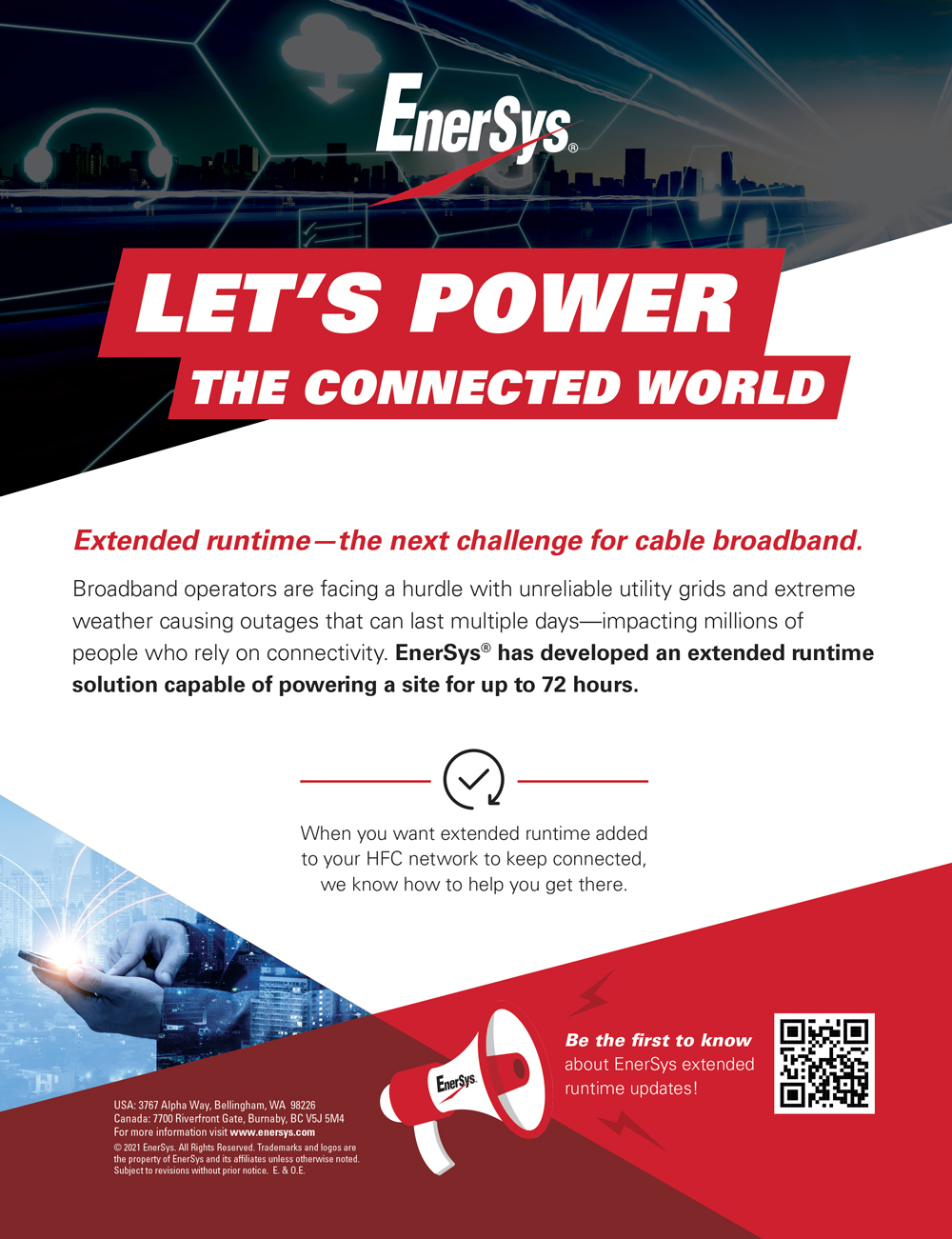Extended Run-time, the Next Challenge for Cable Broadband
Guest Author, Enersys (Sponsored)
Today’s cable broadband hybrid fiber/coax (HFC) network delivers video and high-speed Internet into millions of homes and businesses in North America, and an increasing number of mission-critical applications depend on its availability. Service interruptions are therefore increasingly disruptive, and this vulnerability has been nowhere more evident than in California during the recent wildfires. Although failures in the electrical grid have caused the majority of these outages, the California Public Utility Commission (CPUC) has mandated strict penalties for cable operators whose network operations are unable to continue for at least 72 hours after the grid goes down.
Extended run-time in the spotlight
Power outages are not unique to California. An aging grid and increased frequency of severe weather events are causing disruption across the United States with a recent study showing a 67% increase in outages since the beginning of the millennium.
During an extended outage, good communication becomes critical, and the above trends are highlighting the limitations of HFC network resilience. Cable network operations deploy battery and generator combinations at both inside plant and outside plant sites to give a level of resilience to power utility outages. The duration of these extended run-times varies from operator to operator along with industry standards and definitions of good practice.
The recent decision by the CPUC is a clear indicator of the seriousness with which state legislators view HFC network outages. Cable operators around the country may soon be faced with having to meet extended run-time requirements.
The extended run-time challenge
Increasing run-time at a site effectively means adding energy storage capacity, using batteries, generators, or both. An HFC network contains many different site types, however, and there is no “one-size-fits all” solution. Some sites may have gas mains connectivity to keep their generators running but many outside plant sites are dependent on battery strings. More energy storage means more batteries but often there isn’t enough space for additional cabinets. Battery technology has evolved considerably in recent years with thin plate pure lead (TPPL) technology offering higher energy densities than lead-calcium and now lithium-ion bringing even greater energy storage opportunities. The latter introduces the need for battery management and remote power monitoring capability — which can add significant value to network operations. TCO is key when tailoring the optimum solution for any site, however, and decisions must be based on a deep understanding of network operations.
How can EnerSys help you?
EnerSys is known throughout North America and the world as the company that powers the HFC network. During the recent efforts in California to meet the CPUC’s mandate, EnerSys was right there, alongside its customers, using its unique combination of cable broadband power and advanced battery technologies to help address the 72-hour challenge.
When it’s your turn to upgrade the energy storage in your HFC network, EnerSys has the know-how to help you get there.
For a deeper understanding of what we can do for you please visit us at www.enersys.com, sign up for email notifications and search for EnerSys Cable Broadband to connect on LinkedIn.
Power OFF: Extreme Weather and Power Outages, Climate Central, Sep 30, 2020
https://medialibrary.climatecentral.org/resources/power-outages

Roger Draper,
Product Manager,
EnerSys
Roger.Draper@enersys.com
Roger, Product Manager at EnerSys, focuses on specialized broadband systems development. He has 39 years of product and business development experience in cable broadband powering products used in headend, data center and outside plant applications. Roger was a lead contributing architect for the SNMP standard MIB for UPS Monitoring, RFC 1628.


